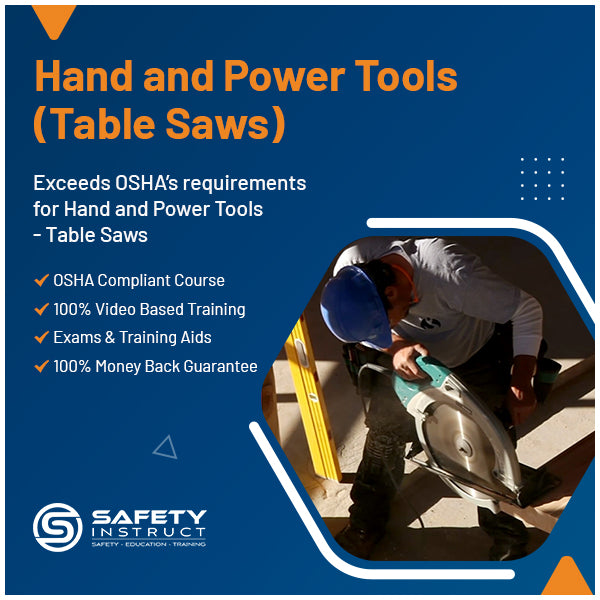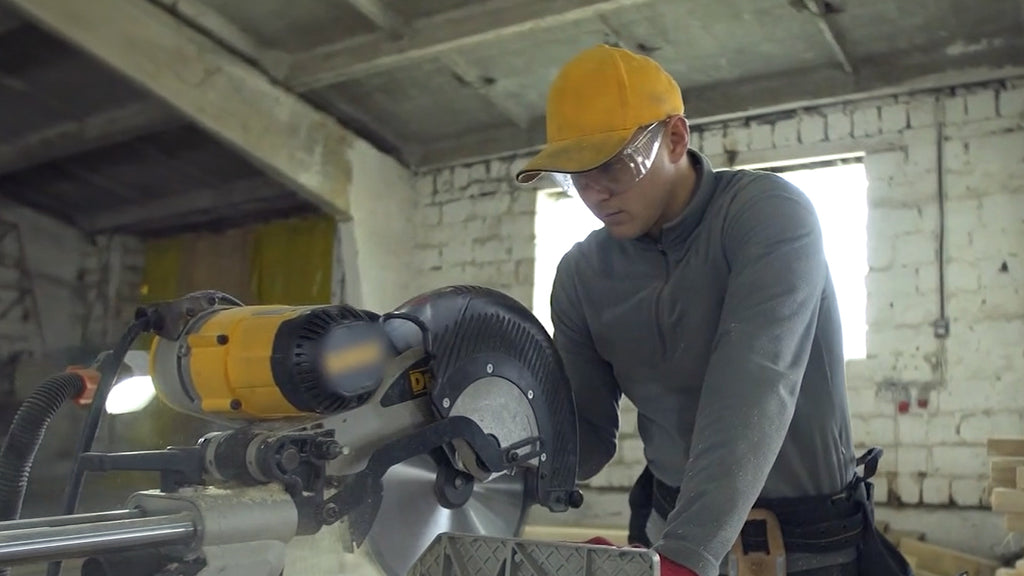No Products in the Cart
Click Here to Schedule a FREE Consultation
Phone: 866-943-6887 Email: sales@safetyinstruct.com



Table saws are one of the most common pieces of equipment found in many industries today. Table saws can provide multiple, precise cuts in a short amount of time. However, although they are very common and used almost daily, they are also a cause of numerous injuries every year.
Table Saw Mechanics
A table saw consists of a circular saw blade mounted on an arbor that material is pushed through. The blade of a table saw can be adjusted to different heights, allowing an operator to cut a variety of materials. There are many types of table saws, including compact, bench top, job site and sliding. The material is hand fed into a table saw and pushed into the blade. To work safely with a table saw, it must be properly maintained. This includes keeping an eye on wear and tear, keeping the saw clean and lubricated, and replacing parts as soon as they need it.
Point of Operation
Most injuries with a table saw happen through contact with the blade, however, injuries can also happen though kickbacks when material is dislodged or debris from a cut flies through the air and strikes a worker. When you operate a table saw, you are pushing the material through the blade, so your hands are in proximity to the moving parts. Having a guard in place that covers the blade will go a long way to keeping you safe. When using a table saw, you must remember that the blade is spinning beneath the table as well, and this part of the blade also requires a protective guard. It is important to always inspect the saw blade and guards before use, as well as making sure there are no cords, chains, or objects in the way that might trip a worker or get caught in the moving parts.
Kickback & Particles
The majority of non-blade injuries from table saws come from kickbacks. This happens when a portion of the blade catches the material and throws it back at the operator. Kickbacks can also happen when the blade height isn't right, the blade is not on securely, or the blade is old and needs to be replaced. The use of kickback fingers will help control the material being cut. Wearing eye protection will help keep sawdust and other debris from getting into your eyes and should be worn at all times. Standing to the side of the blade when making a cut is another preventative measure you can take to stay safe.
Incident Prevention
The best way to keep yourself safe when operating a table saw is to use Personal Protective Equipment. This includes both eye and face protection, as well as the right clothing. Your attire should be durable enough to stop flying particles from striking you. Close toed shoes with non-slip treads are also important, as well as gloves on your hands. Many table saws create a lot of noise, and it is a good idea to use ear plugs when operating one. Other preventative measures you can take to stay safe include inspecting the saw before use to be sure the blade is at the right height and shows no sign of wear and tear, and making sure the area beneath the blade is also clean and the blade protected.


